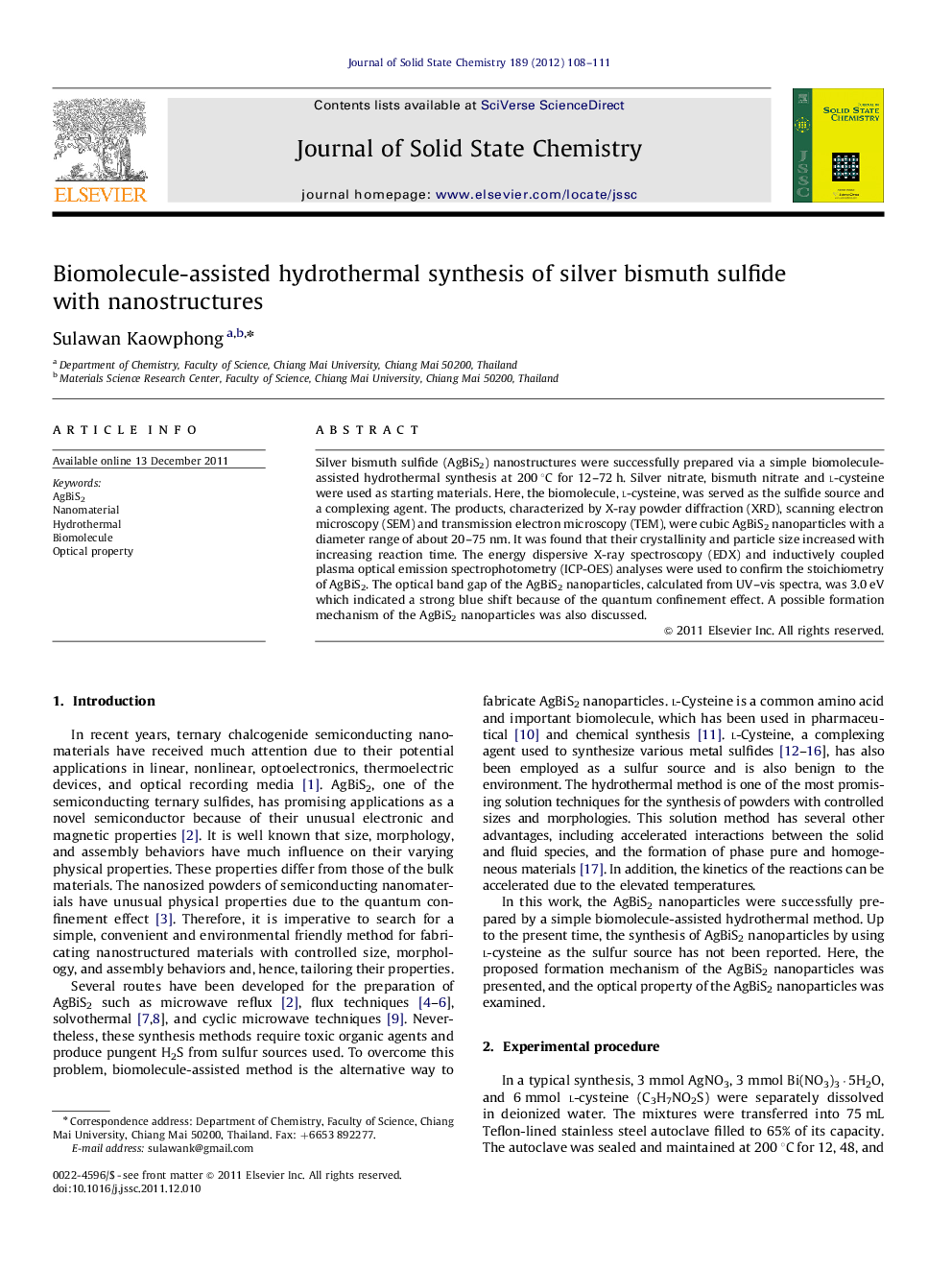| Article ID | Journal | Published Year | Pages | File Type |
|---|---|---|---|---|
| 1330755 | Journal of Solid State Chemistry | 2012 | 4 Pages |
Silver bismuth sulfide (AgBiS2) nanostructures were successfully prepared via a simple biomolecule-assisted hydrothermal synthesis at 200 °C for 12–72 h. Silver nitrate, bismuth nitrate and l-cysteine were used as starting materials. Here, the biomolecule, l-cysteine, was served as the sulfide source and a complexing agent. The products, characterized by X-ray powder diffraction (XRD), scanning electron microscopy (SEM) and transmission electron microscopy (TEM), were cubic AgBiS2 nanoparticles with a diameter range of about 20–75 nm. It was found that their crystallinity and particle size increased with increasing reaction time. The energy dispersive X-ray spectroscopy (EDX) and inductively coupled plasma optical emission spectrophotometry (ICP-OES) analyses were used to confirm the stoichiometry of AgBiS2. The optical band gap of the AgBiS2 nanoparticles, calculated from UV–vis spectra, was 3.0 eV which indicated a strong blue shift because of the quantum confinement effect. A possible formation mechanism of the AgBiS2 nanoparticles was also discussed.
Graphical abstractThe optical band gap of the as-prepared AgBiS2 nanoparticles displays a strong blue shift comparing to the 2.46 eV of bulk AgBiS2 caused by the quantum confinement effects.Figure optionsDownload full-size imageDownload as PowerPoint slideHighlights► A simple biomolecule-assisted hydrothermal method is developed to prepare AgBiS2. ► l-Cysteine is served as the sulfide source and a complexing agent. ► Increase in band gap of the AgBiS2 nanoparticles attributes to the quantum confinement effects.
